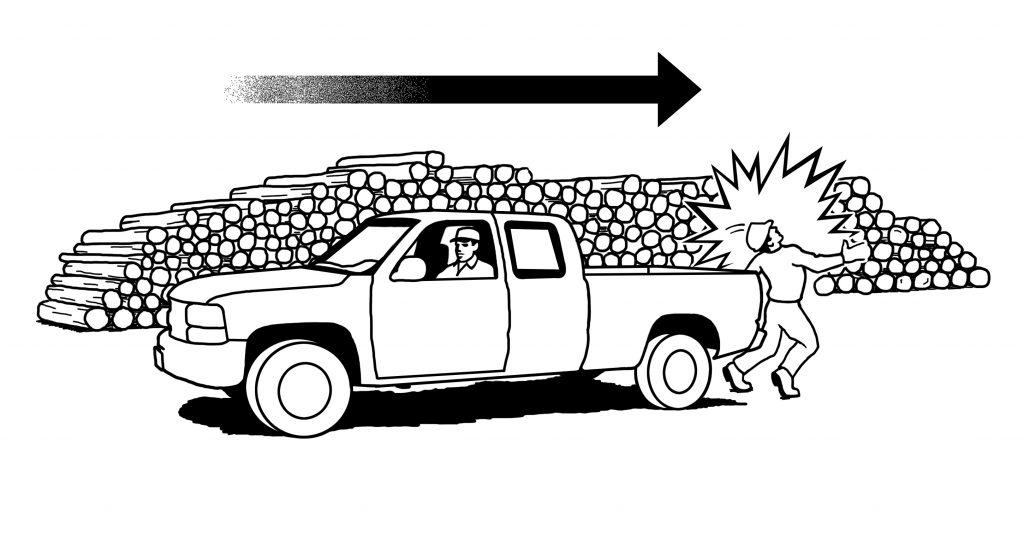
BACKGROUND:
On a cold and windy spring morning in the Northeast, a log procurement manager and a log buyer were on the woodyard talking about moving to a different pile of logs to be scaled.
PERSONAL CHARACTERISTICS:
Both individuals had over 20 years of experience, were trained in log yard operations, and were wearing appropriate personal protective equipment.
UNSAFE ACTS AND CONDITIONS:
When the conversation ended, the manager began walking toward the new log pile. The buyer was in his pickup and began backing up in the same direction. Due to the wind and other activity occurring in the vicinity, the manager couldn’t hear the buyer’s truck. The buyer was using his side mirrors while backing so as to keep between the log piles in the narrow travel lane. The manager was not visible in the side mirrors. The operator of the pickup truck did not check the rear-view mirror and did not completely ascertain the location of others in the vicinity before moving the truck.
ACCIDENT:
The pickup struck the manager, knocking him to the ground. The buyer realized he had hit something and stopped momentarily to check his mirrors. Not seeing anything, he continued to back up. When the truck stopped for a moment, the manager instinctively rolled onto his back and reached up to grab the rear bumper. He held onto the bumper while the truck continued to back up for another 40 to 50 feet.
The manager’s assistant witnessed what was happening and ran to the truck, shouting and waving his arms. The buyer noticed the assistant and stopped the truck. They pulled the manager from under the truck. After several anxious seconds, the manager was able to wheeze and take a breath. He was dazed and in pain.
INJURY:
Everyone involved was in a bit of panic and no one was thinking clearly. The manager drove himself to the hospital, with the buyer following. The manager had fractured two ribs and sustained muscle bruises and aches. He was released from the hospital that day with some pain medication, and he lost only that one day of work.
RECOMMENDATIONS FOR CORRECTION:
Communications, attention, and a traffic flow risk assessment would prevent a similar incident in the future. The manager and buyer could have been very specific and clear about the travel route to be taken from their location to the new log pile. The buyer should have used more than just his outside mirrors to identify personnel or other safety concerns prior to and while moving the vehicle. The manager should have been more alert and aware of the hazards when walking on the woodyard.
Beyond the requirement to wear high-visibility safety vests on the woodyard, there are “personnel warning or detection” technology solutions that can be applied to woodyard machines or vehicles. Periodic driver safety training is important, too.
Injured individuals should not drive themselves to seek medical attention if another option is available. In this incident, they should have called for an ambulance, as the injury could have proven to be much worse than originally suspected.
Reflexes and instinct played an important role in the outcome of this incident. The manager’s presence of mind and reflexes to roll onto his back and grab the bumper of the pickup saved him from more severe injuries and possibly death.
Courtesy of the Forest Resources Association: https://forestresources.org/
